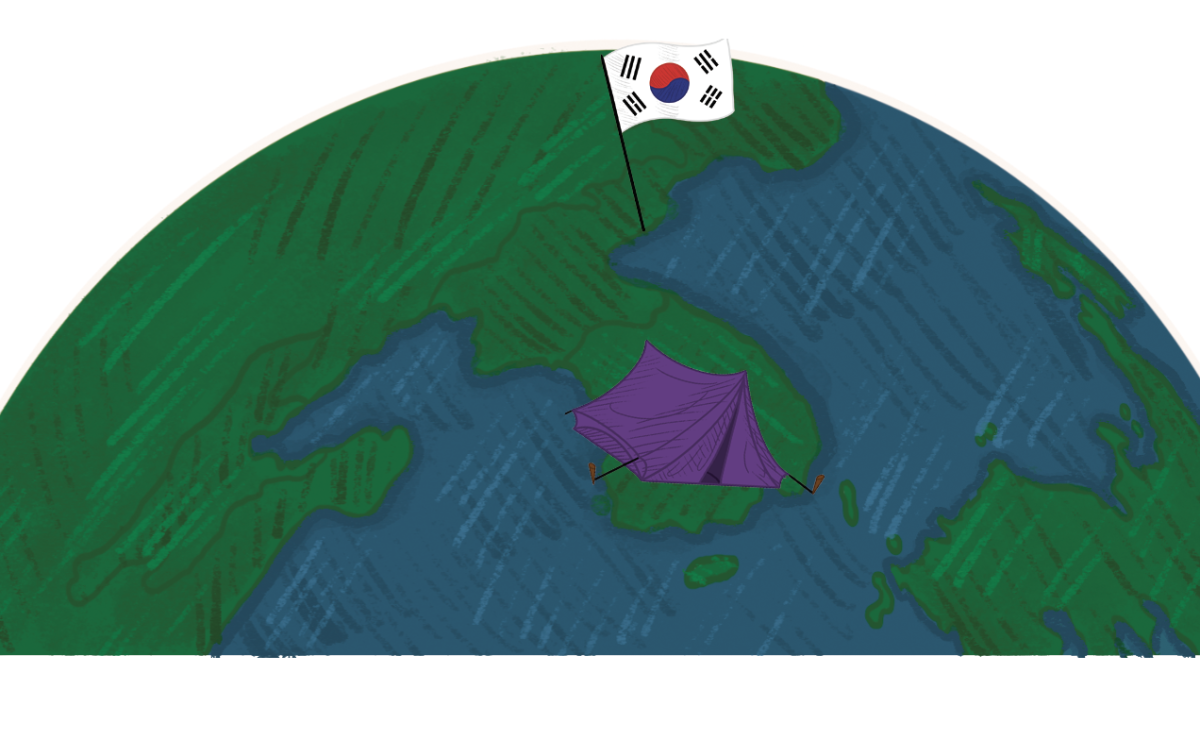Seven a.m.: the sun blazes down on 40,000 tents and temperatures are in the mid-90s. In my tent it feels more like 110 degrees with the humidity. Grabbing the small fan provided by the Korean government, I rush out, my clothes still on from the previous night. I look out at the thousands of tents lined up, grab my water bottle and start the quarter-mile walk to the nearest water fountain.
I spent three days at the World Scout Jamboree in Saemangeum, Korea, an event hosted every four years in a different country each year, with 43,000 different scouts from 156 countries. During my time there I received at least 150 notifications from Korean public health services to stay indoors due to the heat wave and an incoming typhoon. Sometimes echoing notification rings could be heard around the campsite. As we looked at each other, we laughed to make light of the situation because that’s all we could do.
According to the Korean government, hundreds of people at the campgrounds suffered from heat-related ailments, overwhelming the singular hospital at the site. The feeling of hopelessness was felt throughout the campsites. With the minimal transportation available for everyone, our only option was to push through this eight-day event hoping for rescue.
As the typhoon got closer, the US contingent decided to evacuate to the largest foreign military base, United States Army Garrison-Humphrey, as the campground was not built to survive a typhoon. With the need to evacuate 43,000 people in a matter of days, many scouts stayed in university dorms, hotels, and even overflowed hostels.
Coming back to Palo Alto this fall, I could feel a shift in the weather from previous years, some days feeling excruciatingly hot and some days very chilly, with highs ranging from the high 90s to the low 60s. According to the weather channel from the past years, the average peak temperature has increased from 75 F° to 78 F° with numbers reaching the 90s, while in 2022 the temperature reached the highest of 82 F°. Seeing on the news that California was getting hit by a tropical storm — which hasn’t happened since 1939 — reinforced the notion for me that climate change is here and is not stopping anytime soon.
According to the World Health Organization, the number of deaths from heat stress will increase by about 250,000 between 2030 and 2050. To add on, according to the National Centers for Environmental Information, natural/climate disasters have incurred over $12 billion dollars in damages since 2000. These trends show us that climate change not only affects our health but also takes a huge financial toll.
Coming back from Korea, my perspective heavily changed on the status of climate change. From living in the California weather — pleasant and sunny most of the time — to the Korean weather that was, contrastingly, a lot hotter and more humid than normal, I became more grateful for the temperate Californian weather, realizing I needed to do more on my part to help climate change. I found myself gravitating towards choosing more eco-friendly options, grabbing my bike instead of keys to my car.
We’re already noticing this from the increase in temperature and natural disasters. The question in the end is, should we care about climate change? Are we actually willing to do the little things to help our world? The answer is we should. Like climate activist Greta Thunberg said,
“You are never too small to make a difference.”





